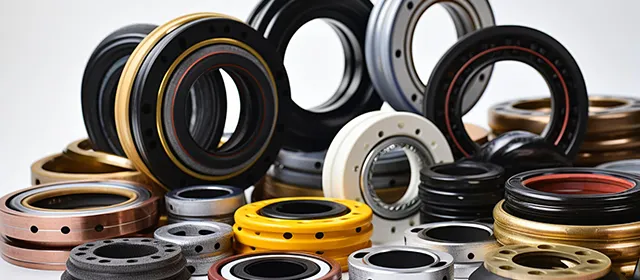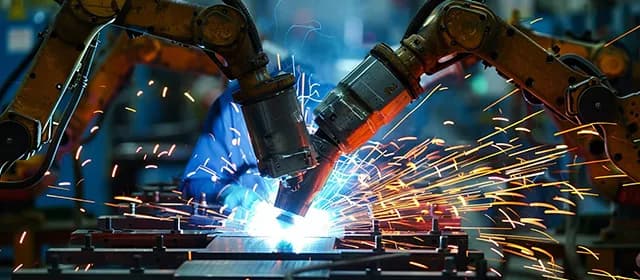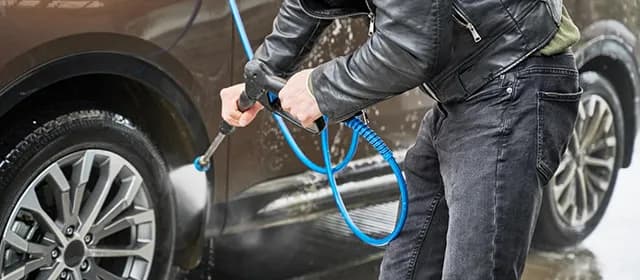In industrial operations, gaskets might appear as minor components, yet they are crucial for ensuring performance, safety, and longevity across countless sectors. They form the barrier that prevents leaks in mechanical assemblies, sustaining the integrity of everything from pipelines to engines, turbines, and critical infrastructure. Their performance affects reliability, efficiency, and environmental compliance, making gasket selection a strategic decision rather than a routine procurement.
According to Kings Research, the global gaskets market is set to generate a revenue of USD 65.73 billion by 2031. For industrial leaders, understanding how gasket needs are evolving is vital. Changing technologies, new manufacturing hubs, shifting energy landscapes, and heightened regulatory requirements are reshaping sealing solutions. This blog explores those dynamics, offering a deep B2B perspective on where the gasket industry is heading.
What Makes Gaskets Essential to Industrial Operations?
At a technical level, a gasket is designed to seal two or more surfaces under pressure, preventing leakage of liquids, gases, or contaminants. Beyond that, gaskets provide mechanical support, vibration damping, and resistance to thermal and chemical stresses. Their role extends far beyond a simple sealing interface; they safeguard equipment performance and operational safety.
In manufacturing, where precision and uptime are crucial, gasket failure can trigger expensive downtime, operational hazards, and regulatory penalties. For instance, in chemical plants or power generation facilities, leakage through failed gaskets can cause environmental harm, safety risks, and significant operational loss.
This makes gasket selection not just a technical decision but a strategic one, where material choice, design precision, installation quality, and maintenance strategies combine to deliver reliable performance.
Gaskets exist in a vast range of materials, from elastomers and composites to metallic layers and advanced polymers. The choice depends on operating conditions, including pressure, temperature, chemical exposure, and mechanical load. In today’s industries, these choices have become more complex as the demands on sealing performance intensify.
How Are Emerging Industries Shaping Gasket Requirements?
The automotive sector is undergoing a profound transformation, and gasket technology is evolving alongside it. In 2023, global automotive production reached nearly 94 million units, a 10% increase compared to the previous year (Source: https://www.fastener-world.com/). This recovery reflects a sustained demand for vehicles despite economic fluctuations, and it brings new challenges for component reliability.
Within this total, electric vehicle (EV) sales approached 14 million units, representing nearly 20% of all new car sales globally. Such rapid adoption of EV technology is creating a surge in demand for specialized sealing solutions.
Unlike internal combustion engines, EV systems require gaskets capable of addressing entirely new conditions. Battery enclosures, power electronics, and thermal management systems operate in environments where temperature ranges, vibration profiles, and electrical insulation requirements differ from conventional engines.
This requires gasket materials with high dielectric strength, thermal resistance, and chemical compatibility. Manufacturers now focus on hybrid designs, using advanced composites and engineered polymers to meet these needs.
For industrial buyers in automotive supply chains, this means gaskets are no longer off-the-shelf commodities. Instead, they must be engineered to exact specifications, with testing protocols and performance guarantees. Collaborations between gasket manufacturers, OEMs, and design engineers have become essential to ensure these seals meet both reliability and regulatory standards.
Why Is the Energy and Power Sector Relying More on Advanced Sealing Solutions?
The energy sector continues to exert a significant influence on gasket demand. In 2023, the upstream oil and gas industry recorded an 11% increase in investment, totaling USD 528 billion, up from USD 474 billion in 2022 (Source: https://www.iea.org/). This growth reflects renewed exploration activity, infrastructure upgrades, and increased production capacity. Such expansion directly translates into demand for high-performance sealing solutions capable of enduring intense mechanical and thermal conditions.
Gaskets in oil and gas applications face extreme challenges: high pressure, fluctuating temperatures, chemical corrosion, and long service lifetimes. The cost of gasket failure in these environments can be catastrophic, leading to safety risks, operational shutdowns, and regulatory repercussions. As a result, industry buyers now prioritize material integrity, certification compliance, and traceability.
The energy landscape is also shifting dramatically toward renewables. In 2023, 86% of new global electricity generation capacity came from renewable sources, a figure that underscores the accelerating energy transition.
This transformation is introducing novel gasket requirements in wind turbines, solar power plants, hydrogen generation, and battery storage systems. For example, hydrogen systems require seals with ultra-low permeation rates, high chemical resistance, and exceptional durability under fluctuating pressure and temperature.
The result is a growing emphasis on innovation in gasket design and materials within energy-intensive industries. Reliability and compliance are no longer optional; they are prerequisites in an increasingly competitive and regulated market.
How Is Asia-Pacific Driving the Global Manufacturing and Gasket Demand?
The Asia-Pacific region has emerged as the fastest-growing manufacturing hub in the world. In 2022, APAC contributed 55% of global manufacturing value added (MVA) and 48% of total manufacturing exports (Source: https://stat.unido.org/). This dominance stems from rapid industrialization, infrastructure expansion, and the emergence of new manufacturing hubs in China, India, and Southeast Asia.
These dynamics are creating an unprecedented demand for sealing solutions. From automotive and heavy machinery to energy infrastructure, the APAC manufacturing boom requires gaskets capable of meeting diverse operational needs. Industrialists in these regions are investing heavily in plant modernization, process automation, and high-performance materials, making gasket reliability a critical component of competitiveness.
For global gasket suppliers, APAC represents both an opportunity and a challenge. Success in this region demands a deep understanding of local manufacturing ecosystems, compliance requirements, and customer expectations. Manufacturers must balance cost efficiency with material performance while ensuring rapid delivery to meet the pace of industrial expansion. Regional R&D and production capabilities have become a strategic necessity for serving APAC’s vast and growing industrial base.
How Are Gaskets Evolving?
Gaskets are evolving with technological developments. Composite materials with elastomers and metals or fibers are common in high-performance gaskets. These hybrids offer more compressibility, creep resistance, and chemical compatibility.
Additive manufacturing is another game changer. It allows for rapid prototyping of complex gasket geometries and low-volume production with no tooling. For industrial buyers, this means faster development cycles and the ability to test custom designs with less risk.
Smart gaskets are emerging. These gaskets have sensors that monitor temperature, pressure, or leakage in real time. These intelligent systems offer predictive maintenance, less downtime, and more reliability.
Sustainability is also influencing gasket development. Manufacturers are focusing on recyclable materials, reducing waste in production, and optimizing formulations to reduce carbon footprint. This aligns with corporate ESG objectives and creates opportunities for industrial buyers to align gasket choices with their sustainability goals.
What’s Next for the Gasket Industry?
Gaskets will become a key component, intelligent, and sustainable. Demand for sealing solutions for hydrogen, ammonia, and biofuel will grow and require materials with unprecedented chemical resistance and durability. Advanced coatings, nano-materials, and self-healing polymers will drive gasket innovation.
Regulation will also be a key driver. Stricter environmental and leakage standards will push suppliers to design with ultra-low emissions performance. Smart gaskets that can monitor continuously will be common in high-value industrial systems.
Asia-Pacific will remain the manufacturing hub and driver of gasket demand. But innovation will come more from North America and Europe, where R&D and advanced manufacturing technologies are concentrated.
Final Thoughts
Gaskets may seem simple, but they are critical to industrial reliability, safety, and efficiency. The evolution of the automotive industry, the growth of energy production, and the rapid growth of manufacturing in the Asia-Pacific region are changing the demand for advanced sealing solutions. For industrial leaders, gasket selection should be a strategic process that considers performance, sustainability, total cost of ownership, and supplier collaboration.
Those who get gasket strategy right will get operational efficiency and a competitive advantage in a rapidly changing industrial landscape.




